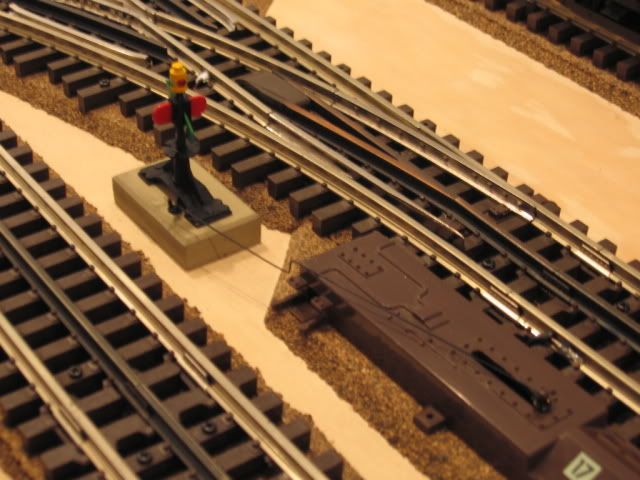Perhaps I will offer all three display styles, at the same price.
The detectors.
Over the past 1-1/2 years I have made about a dozen different detector styles by hand, and then had a dozen prototypes made with surface mount components for evaluation, which are the ones shown below. The production detectors will be about 1/2" x 5/8" for the top mount type, and about 5/16" x 3/4" for the bottom mount type.
The detectors require 12VDC, can supply up to 20ma, and no additional resistors are needed for the LED's - they are built into the detectors. The green and red LED's are wired with the Anode leads as common, connected to the +12VDC, and the other two leads (cathodes) for green and red are connected to the detector. The detectors have four wires: +12VDC, -12VDC, green LED, and red LED.
The magnets I use are 1/8" square x 1/16" thick (bottom mount), and 1/8" diameter x 1/16" thick (top mount). Yes, they are neodymium magnets.
TOP MOUNT:
I have a holder for the top mount magnet easier to install; it snaps in place and a drop of glue will secure it.
BOTTOM MOUNT:
The bottom magnet fits right in one of the square holes in the throw bar, and I simply glue it in place. (The turnout shown is one with which I experimented and is a bit butchered.)
I also have glued the magnets to the throw bar on RCS turnouts, mounted the detectors close to it, and they work fine as well. I plan to come up with an RCS-specific mount.
I'll let the pictures do the talking, and will be glad to answer any questions.
TOP MOUNT, suitable to be added on: (Click on the pictures for better detail.)

The magnet and the pin are flush with the holder top.




BOTTOM MOUNT:


Thank you for your answers, opinions and suggestions - all are great help!
Alex


























